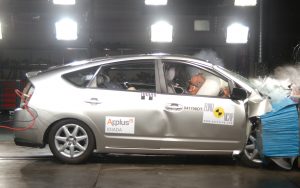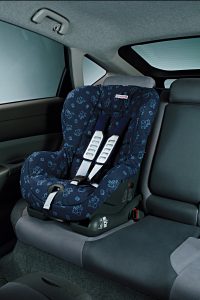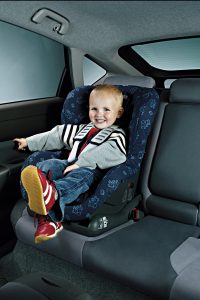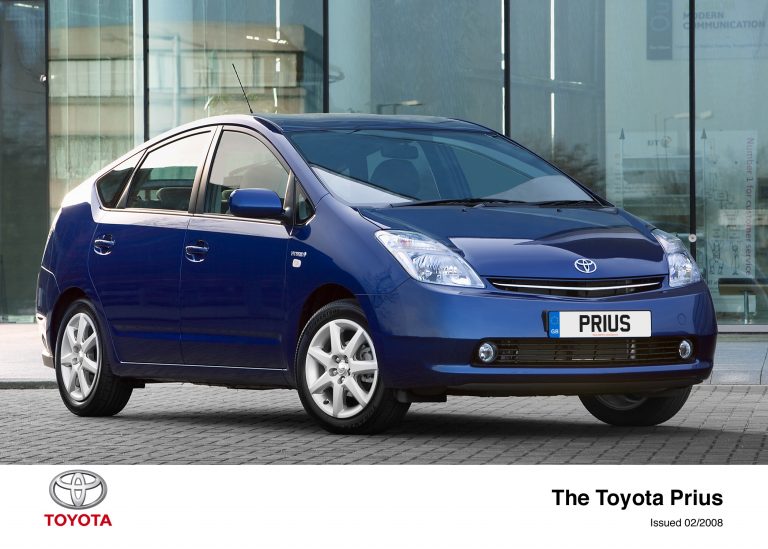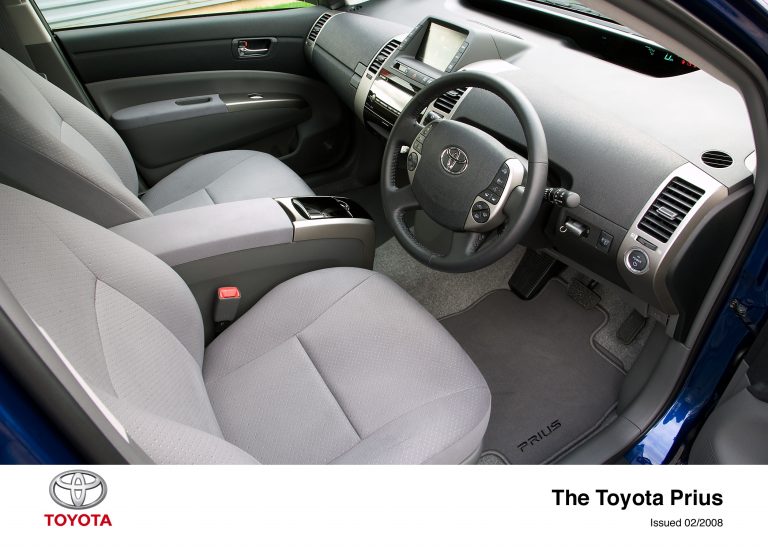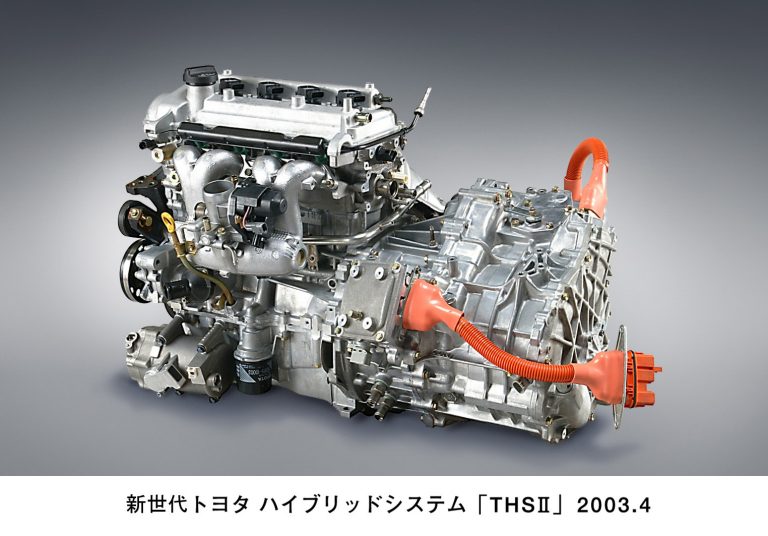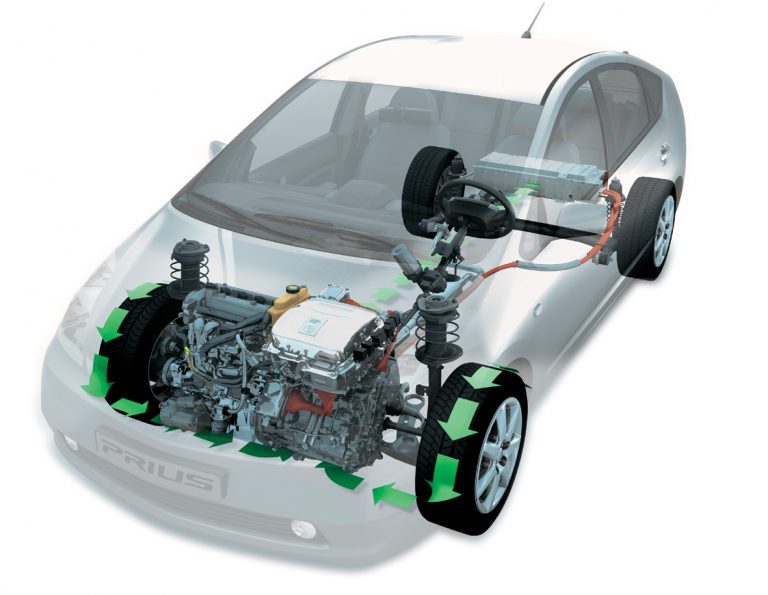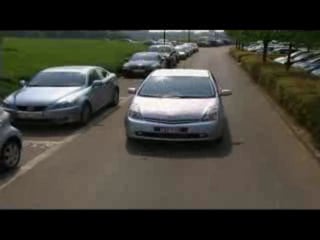Five-Star Prius Best In Class For Safety
- Toyota Prius equals highest ever Euro NCAP score in segment
- Child Protection Rating is a record 43 points and four stars
- Prius is first hybrid power car to be tested by Euro NCAP
- Smart engineering results in strong but lightweight structure
- Computerised crash testing ensures safety is engineered in at earliest development stage
- A further 125 real-life crash tests confirm optimum passive safety
- Prius is Toyota’s third five-star car, following example set by Avensis and Corolla Verso
The Toyota Prius has added class-leading safety to its exceptional qualities with a five-star rating from Euro NCAP. The Prius was the first hybrid power car to undergo the stringent crash testing programme and it passed with flying colours: its score of 34 points for passenger protection matched the highest score yet achieved in its class.
Prius also led the way in the newly-introduced Child Protection Rating, setting a new high score for any vehicle with 43 points. This was achieved thanks to the standard provision of the triple-anchor CRS (Child Restraint System) ISOFIX system and Toyota’s intelligent child seat design.
The exceptional performance of the Prius reflects Toyota’s “total safety” approach to the development of its new cars and follows the class-leading five-star ratings achieved by both the Toyota Avensis and Corolla Verso.
The Prius’s high level of standard safety equipment includes eight airbags, a dual-stage seatbelt warning system which is unique to Toyota vehicles and a knee protection panel. Even the fascia-mounted starting button plays a part, as it does away with the ignition key cylinder on the underside of the steering column, which can cause injuries to the driver’s legs in the event of a collision.
Besides being a strong performer in the field of passive safety, the Prius is equipped with active safety features not to be found in any other car on the market. This unique combination puts Prius at the top of the D-segment in terms of overall safety.
SMART ENGINEERING SOLUTIONS
From a very early development stage, huge numbers of computerised crash simulations were conducted to help develop a bodyshell which offers the best balance between low weight and crash protection.
To achieve this all-important balance, around 45 per cent of the Prius’s bodyshell is constructed from high-strength steel. Combining the use of ultra-high-strength steel in key areas such as the B pillars with a hot-stamping manufacturing process has rendered the metal 2.5 times stronger than conventional high-strength steel – a world motor industry first.
To confirm the data from the crash test simulations, the Prius was subjected to a programme of 125 real crash tests, substantially more than are usually conducted in the development of a new model.
ADDRESSING REAL-LIFE SAFETY ISSUES
‘Real world’ safety issues such as child safety and collisions between two vehicles of differing weights and sizes were addressed during the development of the new Prius.
Impacts between different size and weight vehicles constitute the most common type of accident in Europe, so the Prius was crashed into the much larger Toyota Land Cruiser as part of the testing regime, both vehicles moving at 50 km/h. The results of this testing mean that Prius occupants enjoy the highest possible levels of protection in real-life front, side and rear impacts.
To cope with rear impacts, the body strength was increased and the seat back structure was reinforced. The Prius is also fitted with Toyota’s WIL (Whiplash Injury Lessening) seat design that protects the passengers’ necks from whiplash effects. WIL seats were recognised by the German national motoring organisation ADAC as the best among 10 different whiplash protection systems.
Both the high-voltage electric circuit and the fuel tank enjoy maximum protection in an impact. The hybrid battery is mounted over the rear axle – the safest place in the event of a crash – and the Circuit Break Sensor instantly disconnects the High-Voltage Power Circuit in the event of a frontal impact, operating even before the airbags are fully deployed.
The fuel tank uses a new lightweight plastic multiplex design with maximum impact resistance. Even following a 50km/h rear impact from an SUV, the fuel tank suffers no leakage.
CLASS LEADING ACTIVE SAFETY
Besides being a D-segment top performer in passive safety, the Toyota Prius was also designed to set an example in terms of active safety. To this end, it is fitted as standard with features that are unique in the class: ‘by-wire’ Electronically Controlled Braking (ECB2), Electric Traction Control (E-TRC) and advanced Vehicle Stability Control Plus (VSC+).
The innovative ‘by-wire’ ECB2 braking system uses brake pedal-activated electronic sensors to communicate braking feel to the driver and control the braking hydraulics. It not only generates higher hydraulic pressures than conventional systems, but it is also 17 per cent lighter.
The Prius is the world’s first car to be fitted with Electric Traction Control (E-TRC). The system controls wheel slippage via ECB2 and the high-torque electric motor element of the Hybrid Synergy Drive. E-TRC is so quick in counteracting any incipient skid that the driver often won’t even be aware of its intervention. Nor will he or she hear the tyre squealing that is often associated with wheel spin.
ECB2 and E-TRC are interconnected with Vehicle Stability Control Plus (VSC+), the world’s most innovative stability control system. It works with the electric power steering system (EPS) to add steering torque assistance to the conventional stability control system, helping the driver get the most out of the car’s performance potential by avoiding stability-threatening situations.
ENDS

